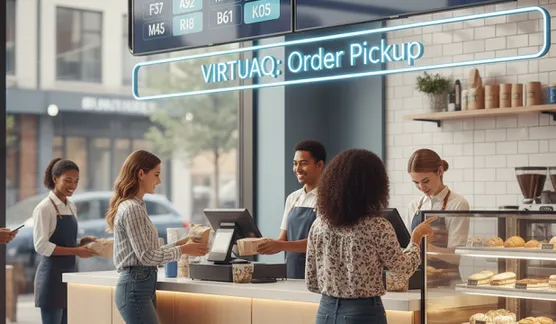The Friction Point
In today’s retail landscape, long waits at the service counter, confusing order pickups, and the chaos of peak hours are not just inconveniences—they are silent sales killers that damage customer loyalty and brand reputation. The expectation for seamless, instant service now collides with the operational reality of managing customer flow, creating a critical need for an intelligent solution. Smart queue management systems (QMS) directly address this friction by optimizing every customer interaction through customer journey orchestration, turning waiting time into a positive experience.
Ready to see how your business can transform operational chaos into customer choreography? Book a Demo Today!
The True Cost of Chaotic Retail CX and Inefficient Order Pickup
The retail customer experience (Retail CX) encompasses every touchpoint a customer has with your brand, from browsing to purchasing and support. When this journey hits a roadblock—especially during order pickup or general customer service—the entire relationship suffers.
Many retailers still struggle with antiquated systems, which become glaringly inefficient during peak hours. This inefficiency isn't just frustrating, it has measurable business costs:
- Lost Sales: After 9 minutes, shoppers are likely to give up queuing and leave empty handed (other research says as little 6 minutes)
- Damaged Loyalty: Negative experiences are shared widely. A single chaotic service interaction can undo months of marketing efforts, leading to churn and a poor brand image.
- Staff Stress: Managing large, unorganized crowds strains employees, leading to burnout and decreased quality of service and overall in-store efficiency.
The solution isn't simply adding more staff; it's about introducing smart queue management to utilize existing resources efficiently and implement true order pickup optimization.
Redefining Service with Smart Queue Management and Retail Technology
The shift from physical lines to virtual queues represents a fundamental change in how businesses manage customer flow. This deployment of retail technology is where a system like VirtuaQ becomes essential, transforming a negative waiting experience into a managed, positive one.
1. Eliminating the Physical Line
The moment a customer enters an unmanaged line, they lose a sense of control and certainty. Smart queue management replaces this stressful experience by allowing customers to:
- Check-in Virtually: Whether via an SMS ticket, a self-service kiosk, or a mobile app, customers enter the queue without needing to stand physically in line.
- Arrive Just-in-Time: By receiving real-time alerts when their service counter or order pickup is ready, customers can time their arrival perfectly, significantly reducing unnecessary loitering or frustration.
2. Wait Time Management and Real-Time Communication
In a chaotic environment, a customer’s biggest frustration often stems from not knowing how long they will wait. A smart system removes this anxiety and facilitates superior wait time management by providing:
- Accurate Estimated Wait Times (EWT): Customers receive a clear, updated projection of their wait, replacing uncertainty with control.
- Real-Time Status Updates: If the service time changes, the customer is instantly notified on their mobile device, keeping them informed and relaxed. This is key to customer journey orchestration.
Retail Analytics and Operational Efficiency: The VirtuaQ Advantage
A smart queue management system is not just a customer-facing tool; it’s a powerful backend engine for operational efficiency. By digitizing the queue, businesses gain retail analytics and real-time data they never had before.
- Effective Staff Allocation: Managers gain an overview of customer flow patterns, service volumes, and peak times. This visibility allows them to strategically assign staff to the busiest areas—be it the return desk, click-and-collect counter, or general service—before a bottleneck occurs.
- Measurable Improvements: Implementing such retail technology often leads to documented improvements in operational efficiency, enabling businesses to serve more customers with the same resources.
By integrating seamlessly with existing retail systems, VirtuaQ ensures that the right staff member is available at the right counter when the customer arrives, maximizing service capacity and minimizing the costly second queue at order pickup.
Conclusion and What's Next
As customer experience expectations for speedy, personalized service continue to rise, embracing innovative solutions is critical for success in the evolving retail landscape. Investing in a smart queue management system not only streamlines operations and increases customer satisfaction but also positions your brand as a forward-thinking leader in Retail CX.
In Part 2, we will delve into the technical mechanisms of VirtuaQ—exploring how features like Dynamic Service Routing, operational dashboards, and personalized engagement tools directly solve the modern retail service bottleneck, offering true customer journey orchestration.
Ready to Transform Your Service?
Discover the advantages of adopting VirtuaQ for your business today! Click here to learn more about our retail solutions and Book a Demo.
